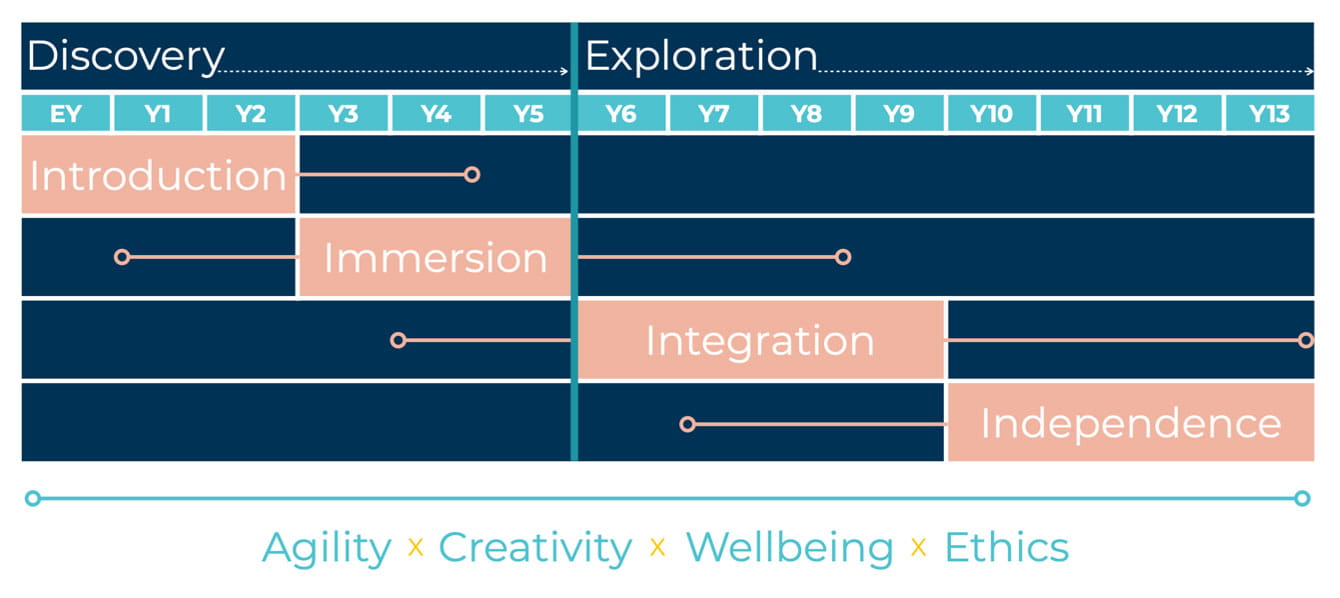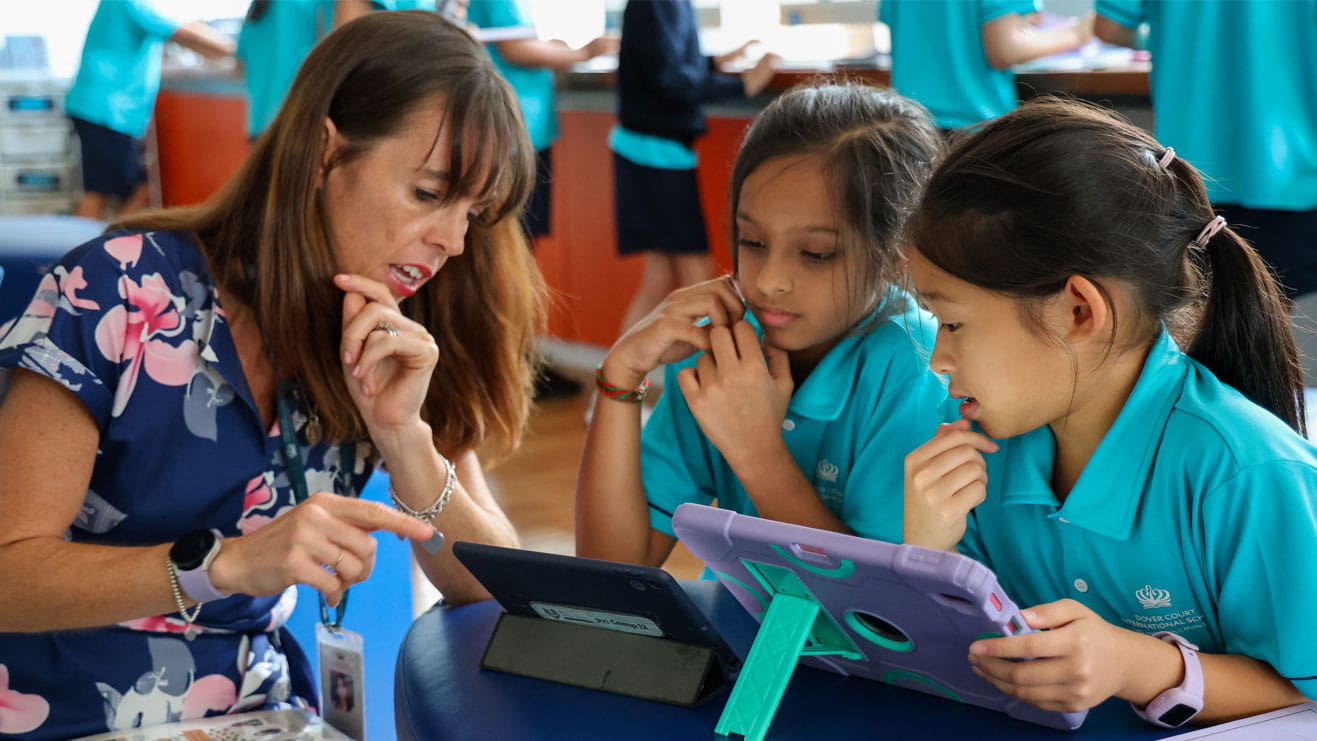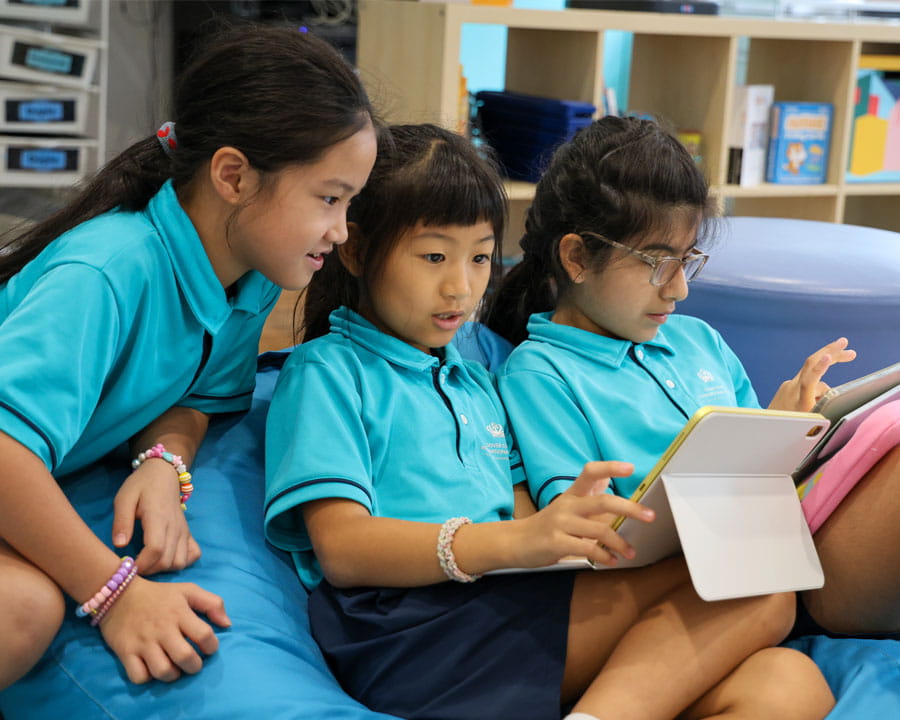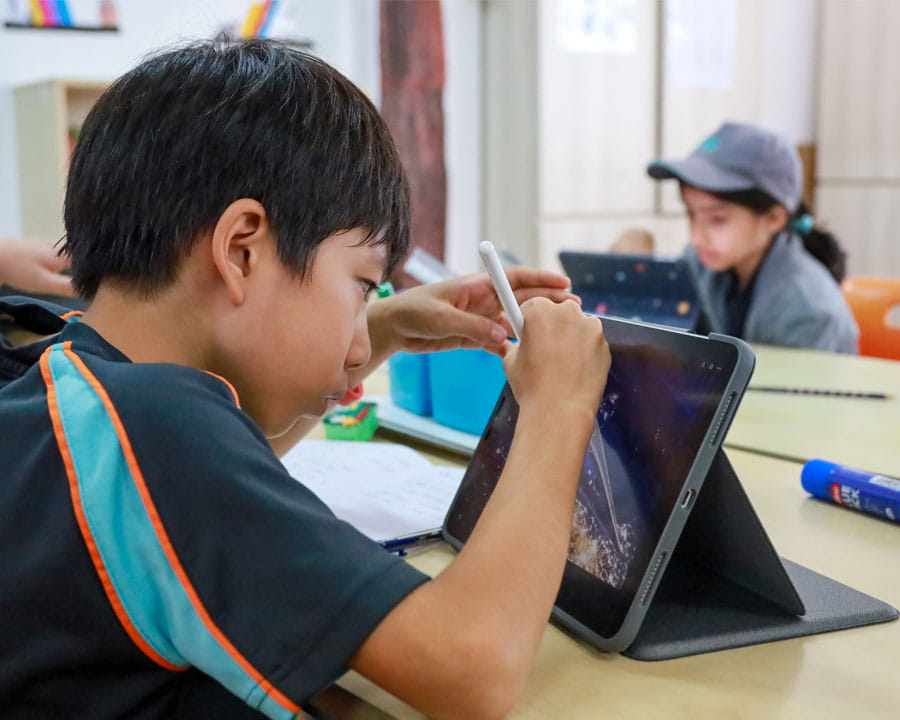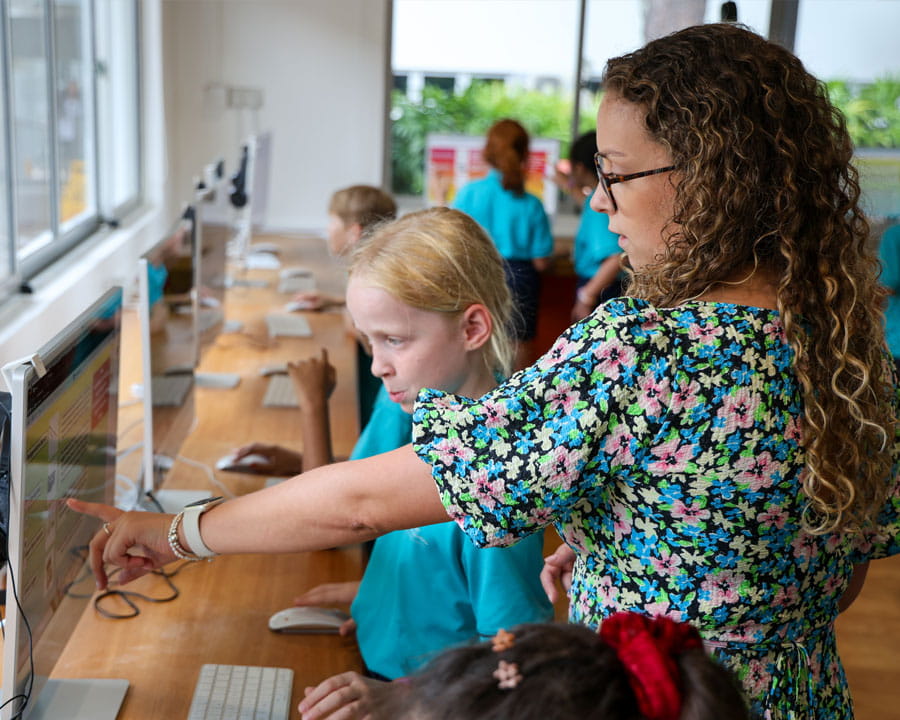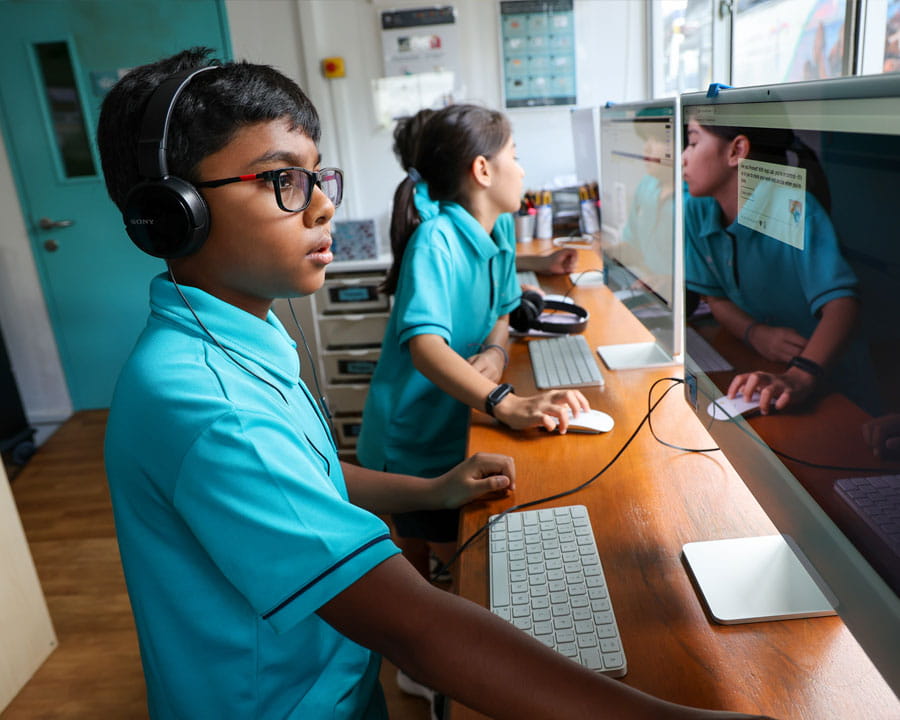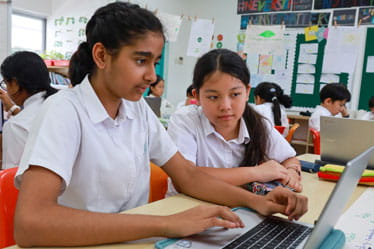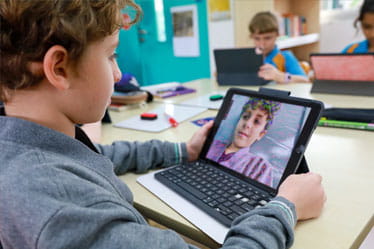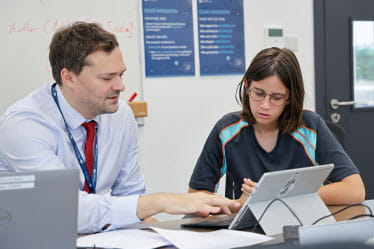Welcome to the DCIS Digital area of the school website. Throughout these pages you will find lots of information regarding our Digital Strategy, including but not limited to:
- How technology supports learning through our Technology Programme
- How technology helps to support our core belief of inclusion through increased access and ease of access due to available accessibility features
- Insight and guidance for some of our core platforms we use
- Relevant research that we use to guide our thinking and development of our programme
Why do we feel that technology is such an important facet of modern day and future learning?
The world around us has, is, and will continually evolve. Innovation, automation, machine learning and machine intelligence have been, and continue to be, major drivers of change across society.
Yet, many of societies’ education ideals remain. As we continue through the 21st century it is imperative that schools adapt their approaches to meet the needs of the now as well as the future. Many believe that we now find ourselves in a fourth industrial revolution1, one in which new technologies and people coexist, where automation of technology has replaced some jobs but the ‘human’ element of these has also been lost.
Similarly, we have seen the power that utilising technology can have within society to evoke change, spread messages and mobilise vast numbers of people. This has not always been done positively or led to actions which we, as society, can fully condone. But the power and breadth of technology throughout society cannot be ignored.
It is for this reason that, in schools, a measured, progressive and purposeful approach to the use of technologies and elements surrounding its use is needed. We are preparing today’s learners to be tomorrow’s leaders and change makers. Our challenge is to not only acknowledge that technology is and will continue to be a prevalent factor across all that we do but more importantly to guide students through the learning process to make positive and appropriate choices. We need to guide them through a move from ‘engagement with’ to ‘empowerment through’ and how to best leverage current and emerging technologies with agility and modelling the correct ethics that must drive our use of, and interaction through, technology.
Therefore we must learn: how to use technology, how we can leverage technology for our use, and how technology can be used to help us to learn. This must then be balanced with the development of social skills; the ability to communicate with clarity and confidence; to be critical-thinkers; to show humility; to be aware of our responsibility to the natural world around us; and to show a respect and understanding of self and others’ wellness, wellbeing and mental health.
The task at hand is no easy feat. Technology isn’t the answer to all problems, the provider of all solutions or the most efficient outlet for all tasks. However, it can be a tool through which a multitude of possibilities are endless, creativity can be unleashed and much of what was once deemed impossible can become reality.
With a nod to Dover’s traditions and core values, coupled with an acknowledgment of the present and to the future, our Digital Strategy is designed to guide our whole community between 2023 and 2026 to ensure learning across the whole curriculum is supported by a shared vision, a progressive developmental framework, a set of common and focused core pillars, and appropriate devices. Most importantly, there is a clear focus on learning in order to achieve our vision statement:
“a digitally proficient, curious and resilient community of learners who leverage technology to have a positive impact on themselves and others.”
1. Marr, B. 2018, The 4th industrial revolution is here - are you ready?; Forbes Online
Progression Map
